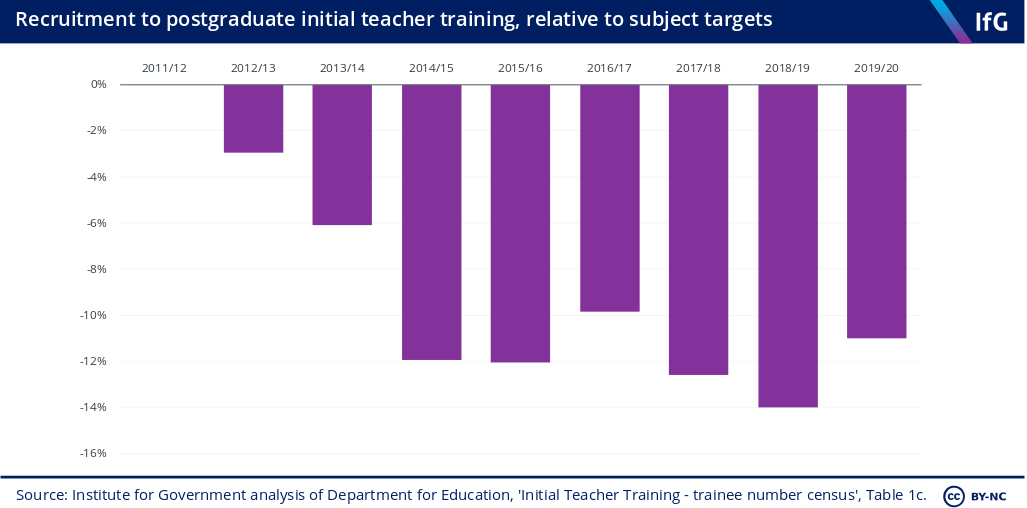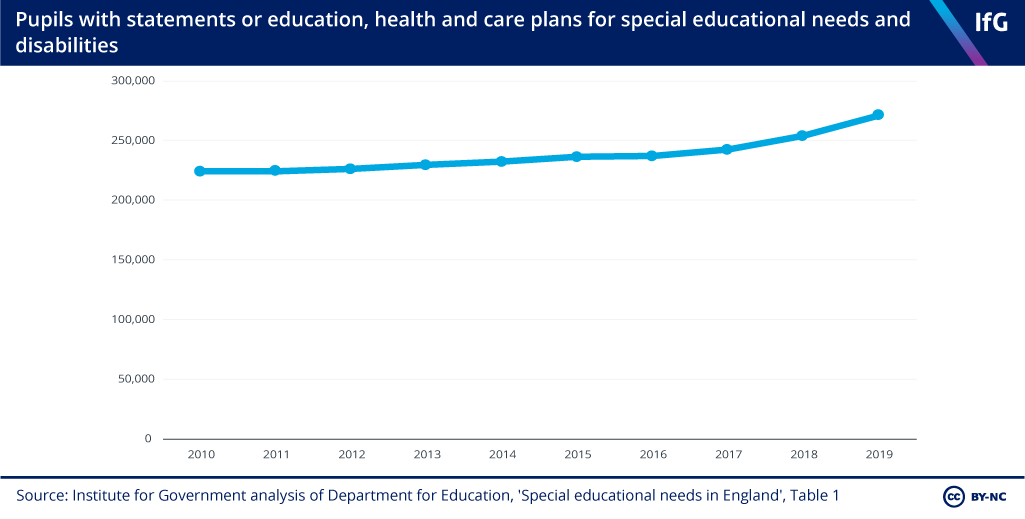Party manifestos promise money but no clear plan for schools spending
The parties’ proposals for large school spending increases need to address teacher retention.
Graham Atkins argues that the parties’ proposals for large school spending increases need to address teacher retention.
The 2017 election – in which school spending featured prominently – has cast a long shadow over this year’s manifestos. All parties are now proposing substantial increases in school spending. While that is welcome, the question now is where this money is spent. And the latest data makes it clear that the next government will have to address the staff pressures on schools – recruiting, and in particular retaining, enough teachers.
Labour, the Conservatives and the Lib Dems are now promising to reverse school spending cuts
All parties are now pledging large increases in school spending, effectively reversing the 8% per pupil cuts since 2009/10. Labour has pledged to increase spending faster, such that per pupil spending would be 7% higher by 2022/23 than it was in 2009/10.
This marks a big change since the 2017 manifestos. Two years’ ago, the Conservative's proposals implied a 3% per pupil spending cut, the Lib Dem's proposals would have frozen per pupil spending, and Labour’s proposals would only have reversed cuts since 2015.
The rising share of pupils with special educational needs and disabilities mean school spending pledges won’t go as far as they did in 2010
One of biggest financial pressures on schools now is providing support to children with special educational needs and disabilities (SEND).

The cost of providing these pupils with support has increased because a larger share now attend special schools, where spending per pupil is considerably higher.
This directly impacts the spending pledges which the three main parties in England have made. They have all at least promised to take per pupil school spending back to 2010 levels – but the rising share of pupils with special educational needs means that money may not have the effects on the ground that voters expect.
This is not a problem unique to schools. In adult social care, the cost of providing care rose much faster than inflation between 2015/16 and 2018/19, so returning spending per person back to 2010 levels per user may still feel like a cut in services to those using them.
The parties need to retain existing teachers and recruit new ones
In addition to rising pressures to spend more, the next government will need to address the immediate workforce problems it inherits. The past three governments have missed targets for secondary teacher recruitment every year since 2012/13.

To that end, the three main parties in England have promised to recruit more teachers and increase pay. This is sensible – raising starting salaries should make it easier to recruit new teachers. Increasing existing teachers’ pay after eight years of the public-sector pay cap could help retain existing, and increasingly dissatisfied, teachers. The share of secondary teachers who felt their pay was fair fell from 53% in 2013 to 48% in 2018.
The manifestos have fewer policies, however, on the problem of retention. Since 2010, the number of newly qualified teachers quitting within three years has increased each year.
On average, teachers who leave the profession take an average 10% pay cut, while 20% take up part-time work. This suggests that the next government will need to find ways to encourage part-time working and reduce teacher workload.
The increase in school spending will be welcome news to heads across England. The exam question which the parties need to answer is how that money will be spent.
- Supporting document
- performance-tracker-2019.pdf (PDF, 4.23 MB)
- Topic
- Public services
- Publisher
- Institute for Government